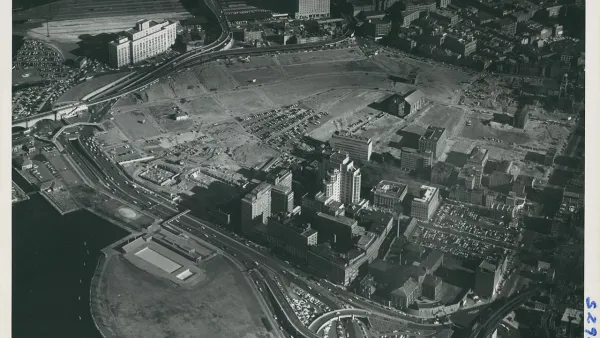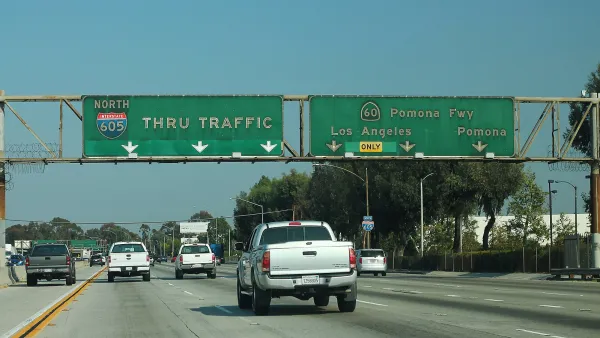In cities like Boston, the government’s right to take private property displaced residents and destroyed vulnerable neighborhoods and communities.
In a segment for the urban planning YouTube channel City Beautiful, Dave Amos looks at the history of eminent domain and how it has decimated neighborhoods in cities across the United States.
Government acquisition of private property for public use is not always a clear-cut process, and the idea of public use should really be understood as the public benefits such actions provide, says Amos. And the justifications for use of eminent domain are sometimes questionable, he argues.
"City leaders would often claim an area was blighted and use it as a rationale for abusing eminent domain and transferring properties from poor property owners to developers. And they would often build projects for the wealthy—things like condos, performing arts centers, and shopping centers," notes Amos.
He also takes issue with the very idea of blight and planners’ assertion that these areas needed to be destroyed and replaced with something better. One example of the urban renewal wave sweeping across the nation was what happened in Boston’s West End neighborhood. It was demolished in the 1950s, displacing over 10,000 residents, many of whom ended up in substandard housing.
The motivation for razing the West End was not improving neighborhoods, says Amos. Instead, developers saw the area as ideal for redevelopment of central Boston. "Poor and minority neighborhoods were seen as a disease that needed to be exterminated so that wealthy residents, shoppers, and businesspeople could return to the central city," adds Amos.
FULL STORY: Midweek Video: How Eminent Domain Destroys Neighborhoods

National Parks Layoffs Will Cause Communities to Lose Billions
Thousands of essential park workers were laid off this week, just before the busy spring break season.

Retro-silient?: America’s First “Eco-burb,” The Woodlands Turns 50
A master-planned community north of Houston offers lessons on green infrastructure and resilient design, but falls short of its founder’s lofty affordability and walkability goals.

Delivering for America Plan Will Downgrade Mail Service in at Least 49.5 Percent of Zip Codes
Republican and Democrat lawmakers criticize the plan for its disproportionate negative impact on rural communities.

Test News Post 1
This is a summary

Test News Headline 46
Test for the image on the front page.

Balancing Bombs and Butterflies: How the National Guard Protects a Rare Species
The National Guard at Fort Indiantown Gap uses GIS technology and land management strategies to balance military training with conservation efforts, ensuring the survival of the rare eastern regal fritillary butterfly.
Urban Design for Planners 1: Software Tools
This six-course series explores essential urban design concepts using open source software and equips planners with the tools they need to participate fully in the urban design process.
Planning for Universal Design
Learn the tools for implementing Universal Design in planning regulations.
EMC Planning Group, Inc.
Planetizen
Planetizen
Mpact (formerly Rail~Volution)
Great Falls Development Authority, Inc.
HUDs Office of Policy Development and Research
NYU Wagner Graduate School of Public Service





























